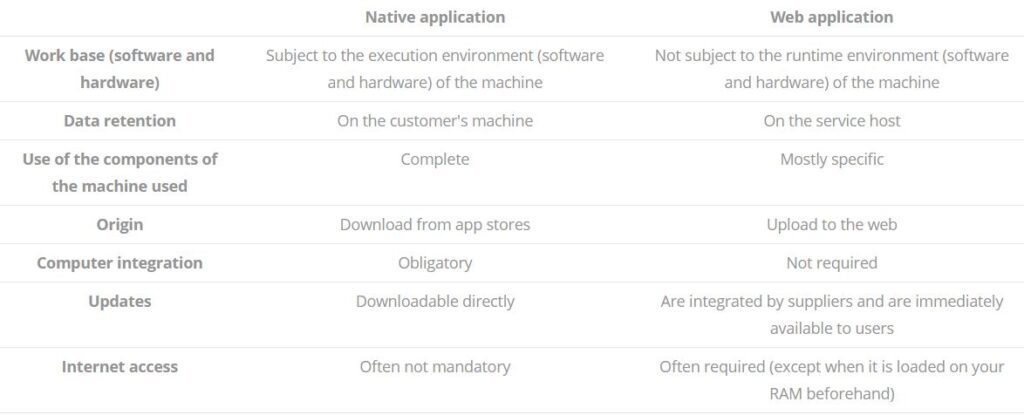Our era is permeated daily and more and more by digital, a world that dominates the global market for services and products. Applications at the heart of the business are introduced into this digital revolution with nuances that differentiate the native application from the web application which are essentially contrasted in the background, specifically affecting their initial coding, their display / general structure in parallel with their respective accommodations.
Native application: A continuation of the heritage of the Hardware school
The native applications are pre-designed for a specific operating system and are not in the position to run on all platforms.
An application store (such as Google Play Store for Android) present and offer this kind of applications, sometimes free and sometimes paid. We can say with certainty that this kind of store is preponderant in the application market: it is the first reference to which the mobile user goes to download the desired app.
The first thing that comes to mind when talking about precisely native applications is their common characteristic: They are only programmed to be functional on a single OS (operating system). An application originally developed for Apple will imperatively be executable on this OS specific to the brand. It is exclusive and specific to its nature. This correlation relationship reflects many merits and obstacles: assuming that IT professionals want to touch various OS, they will therefore be forced to conceptualize a custom App for each system separately. This task, therefore, implores a longer and more remarkable commitment (temporal and logistical) than for its neighbor, the Web App.
It must be admitted that a native application is naturally the most acclimatized to its original operating system. In addition, the latter will use the ROM / RAM of the computer device as well as its storage space. All in all, this alternative is therefore the most recommended when it comes to the birth of technically advanced and developed software.
Web App: Using the Internet for ergonomics
The web application itself offers its programmer the essential advantage of not being forced to program an independent prototype for all machine models and fully-fledged OS (Operating System).
Indeed, once access to the website of the application via a usual browser is made, the model of the machine used will not matter, whether it is Apple operating through iOS, or that it is of the PC type operating through Windows Professional for example.
We must mention one advantage among others, which is safety and insurance: if we take the example of the native application (native application) we will see that imperfections and failures can only be corrected by directly loading files on your storage space: downloading updates is a necessity!
On the other hand, a platform that directs its client to a browser improves its capabilities via integrated updates for all of its applications in order to guarantee mobile users / Internet users the latest patch (the most secure and authentic of course). A web application is decidedly more profitable and easier to develop.
We remain in the impossibility of trimming: is one format “better” than another? This observation remains closely relative: the preferences, the budget, and the expectations of the programmers and their clients are the decision-makers!
Our team has taken care to provide you with a small comparative table of these two families of applications:

Our team of computer engineers has crowned several successful custom application projects with our partners, and we offer a wide range of turnkey applications at the heart of your business. If you want an application organized around your personalization, ask our team for help now. Just send us a request through our site and we’ll get back to you with a quote that will meet your budget.










Indinavir (Cipla Ltd) Avodart Aristocort
arthritis https://pharmacylo.com/ allergy